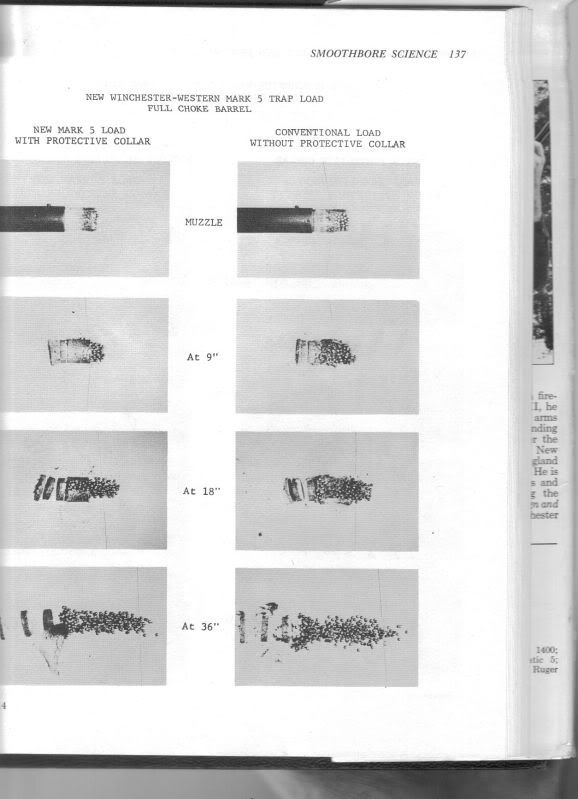Can anyone provide URLs to photographs of an overpowder wad disc departing the muzzle of a muzzleloading shotgun directly behind the shot train? Even better would be some photographs or x-rays of the wad disc and shot progressing down the barrel. Reason I ask is that I have myself in a bind, being able to argue either way about overpowder wads:
Argument 1 - Overpowder wads are unstable & ineffective:
A disc perpendicular to the barrel and under pressure from the gaseous expansion of gunpowder would appear to be in an unstable equilibrium so that, were the disc wad tipped (or bent) ever so slightly, gases would blow by the wad, further tipping it, pushing shot away from the tipped portion and rapidly dropping pressure. The upshot (no pun intended) of this would be that disc wads don't work well.
Argument 2 - Overpowder wads are stable & self-correcting:
Any area of the disc where gases could blow by would necessarily be an area of locally reduced gas pressure and consequently of reduced force on the edges of the disc. Similarly an area where gases were blocked would be an area of locally increased pressure and consequently of increased force on that edge of the disc, providing a self-righting impulse. The side of the disc under the greater pressure would move more quickly down the bore, righting the disc. The disc is in a dynamically stable equilibrium when perpendicular to the bore. The upshot of this is that disc wads work marvelously.
All this without considering the differences between disc wads that are stiff, those that are flexible and without computing the spherical harmonics of the disc as it flies down the barrel betwixt combusting powder and shot!
A plea to the scientific method: a photograph could cut this Gordian knot with which I've ensnarled myself - my brain for a photograph! Aaaargh!
Photos that consistently show a disc wad exiting the barrel while perpendicular would take me out of my conundrum.
Argument 1 - Overpowder wads are unstable & ineffective:
A disc perpendicular to the barrel and under pressure from the gaseous expansion of gunpowder would appear to be in an unstable equilibrium so that, were the disc wad tipped (or bent) ever so slightly, gases would blow by the wad, further tipping it, pushing shot away from the tipped portion and rapidly dropping pressure. The upshot (no pun intended) of this would be that disc wads don't work well.
Argument 2 - Overpowder wads are stable & self-correcting:
Any area of the disc where gases could blow by would necessarily be an area of locally reduced gas pressure and consequently of reduced force on the edges of the disc. Similarly an area where gases were blocked would be an area of locally increased pressure and consequently of increased force on that edge of the disc, providing a self-righting impulse. The side of the disc under the greater pressure would move more quickly down the bore, righting the disc. The disc is in a dynamically stable equilibrium when perpendicular to the bore. The upshot of this is that disc wads work marvelously.
All this without considering the differences between disc wads that are stiff, those that are flexible and without computing the spherical harmonics of the disc as it flies down the barrel betwixt combusting powder and shot!
A plea to the scientific method: a photograph could cut this Gordian knot with which I've ensnarled myself - my brain for a photograph! Aaaargh!
Photos that consistently show a disc wad exiting the barrel while perpendicular would take me out of my conundrum.






 :hmm:
:hmm:
